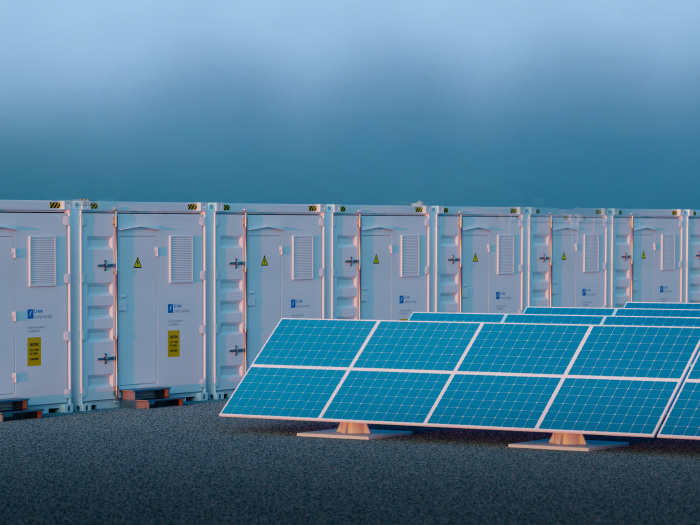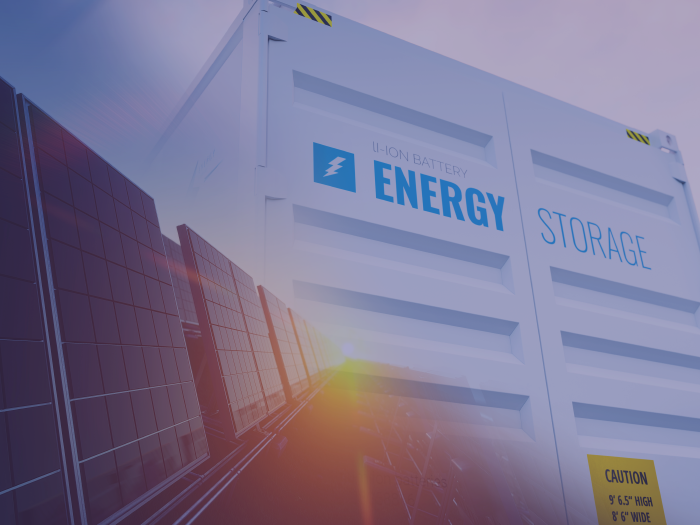News
better business decisions
Posted 1 year ago | 4 minute read

The importance of co-location and hybrid projects in the energy transition
Co-located or hybrid energy projects, which combine generation assets such as solar or wind with battery energy storage systems (BESS), play a crucial role in the global energy transition.
These projects offer numerous advantages, including increasing the reliability of energy systems, optimising the value of renewable energy, and providing consistent energy output. As a result, they present a promising opportunity for grid operators to enhance grid efficiency and stability, while also generating greater revenues for energy developers and investors. But these type of projects also pose significant challenges.
Advantages
One of the main benefits of combining energy storage with renewable energy sources is the reduction in operational costs. Batteries allow for excess energy to be stored during periods of low demand and discharged during peak times, thus reducing reliance on more expensive and carbon intensive energy sources, such as gas-fired power plants.
In Great Britain, National Grid’s Future Energy Scenarios (FES) highlights that by 2030, battery energy storage could play a key role in reducing peak-time energy costs and enhancing grid stability. In Ireland, the installation of storage at the country’s largest wind farm, the Galway Wind Park, demonstrates how batteries can enhance operational efficiency, reducing reliance on non-renewable backup power sources.
Renewable energy sources are inherently variable, as they rely on natural conditions that are not always predictable. Co-located batteries help smooth out these fluctuations by providing a consistent energy supply even during times of low renewable output. In Australia, for example, the country’s east coast faced a wind drought in 2023, which highlighted the need for hybrid solutions to provide more consistent energy to the market. For investors, the certainty of supply and demand provided by the BESS assists with forecasting future revenue rather than experiencing the highs and lows of the generation market; especially considering batteries have a maximum capacity, which when discharged at peak periods provide a certain 2-4 hours of consistent income. But getting the right strategy to trade at the appropriate prices during these peak periods will be crucial for a successful project.
Falling battery prices are another major factor contributing to the feasibility of such projects. Over the past 18 months, battery costs have dropped by approximately 23%, and this trend is expected to continue as battery technologies improve and their capacity increases.
The regulatory landscape is also evolving to better support hybrid projects. In June 2024, the Australian Energy Market Commission (AEMC) introduced changes to the National Electricity Rules, creating a new registration category called Integrated Resource Provider (IRP). This allows hybrid projects to participate under a single registration, streamlining the process for developers. Similar regulatory developments can be observed in the UK, where Ofgem has been working to adapt its grid codes and market rules to better accommodate hybrid systems and support their integration into the grid. In Ireland, EirGrid, the country’s grid operator, has made strides in facilitating the connection of hybrid systems, allowing them to participate more actively in the market.
Challenges
Despite their advantages, hybrid projects present certain challenges that developers must navigate.
Hybrid projects require careful coordination with grid operators to ensure timely and efficient connection to the grid.
Obtaining development approvals for hybrid projects can be complex, particularly when approvals for generation and storage components are treated separately. In Australia, some hybrid projects have faced difficulties in determining whether co-located assets must be developed together or separately. Similarly, in Ireland, the planning process for wind or solar farms with battery storage is often complicated by the legislative frameworks which does not currently fully account for the hybrid nature of these projects. This lack of clarity can lead to delays and increased costs.
The financing of hybrid projects can also be more complicated than traditional renewable energy projects as more complex projects generally have greater scope for delays and cost-overruns. As such hybrid projects often require more complex contractual arrangements, such as integrated Power Purchase Agreements (PPAs) and Battery Storage Agreements (BSAs), which introduce additional layers of risk. Financiers may be concerned about gaps in split contracting structures or uncertain revenue streams, especially when dealing with newer technologies like battery storage.
The future of co-location
Despite these challenges, the trend toward hybrid and co-located projects is expected to accelerate. The integration of renewable energy generation and storage is becoming increasingly attractive to investors, developers, and policy-makers alike, as it provides a more reliable, cost-effective, and sustainable energy solution. Governments are offering increasing support for hybrid projects through initiatives such as the Capacity Investment Scheme (CIS) in Australia. These policies recognise the value that hybrid projects bring in terms of both system reliability and economic benefits.

Harnessing the power of battery energy storage systems to optimise solar utilisation- White Paper
Solar energy presents a significant opportunity for both residential and commercial entities to reduce their carbon footprint and energy costs. But, one of the challenges with solar energy is managing the excess power generated during peak sunlight hours.
Learn more




